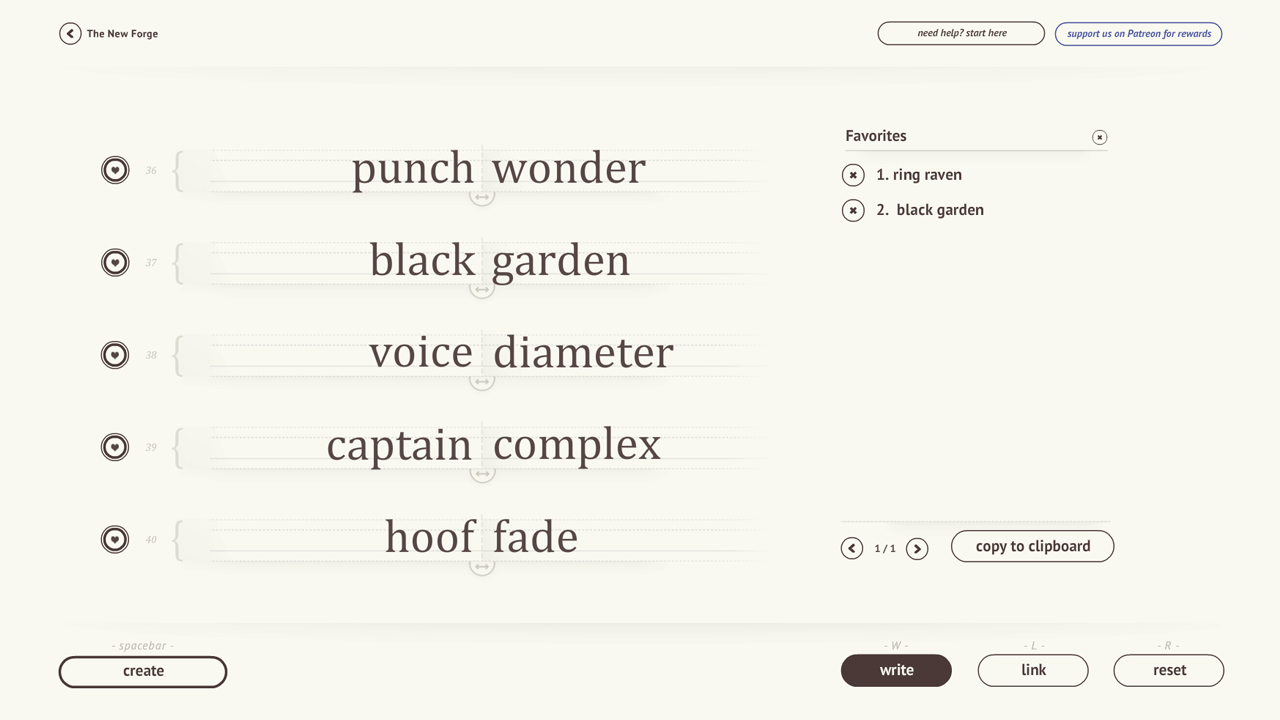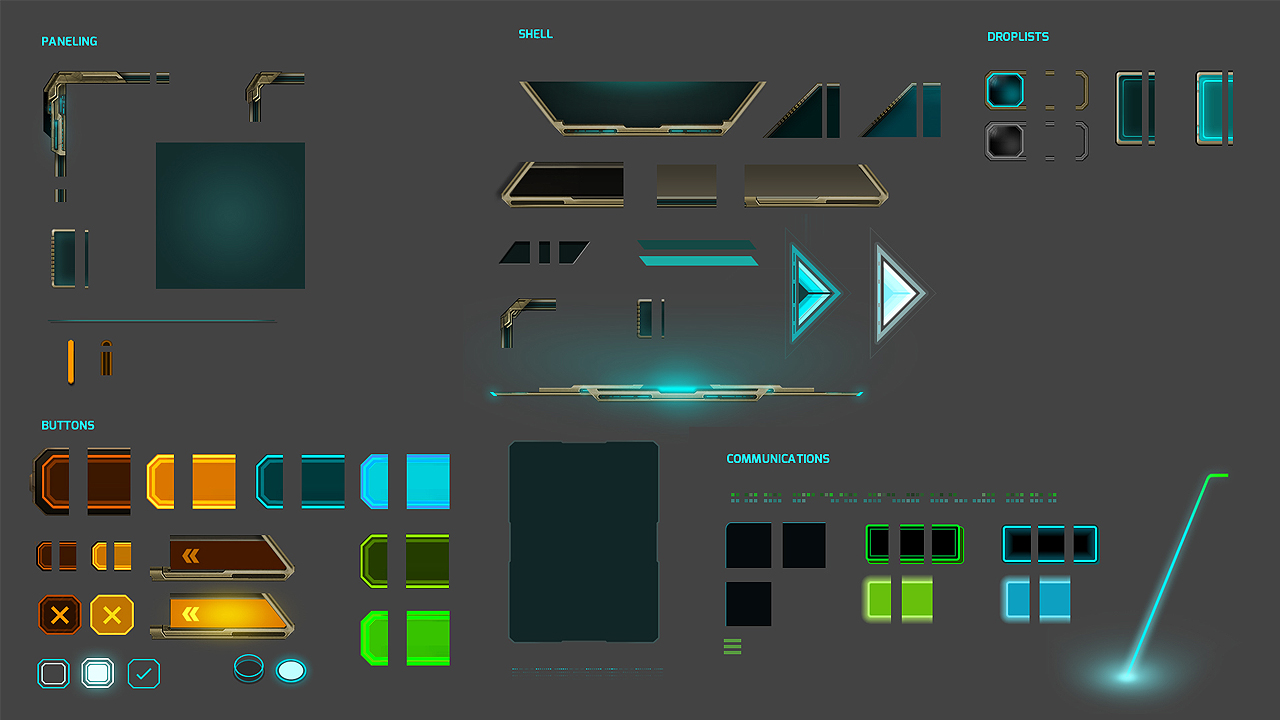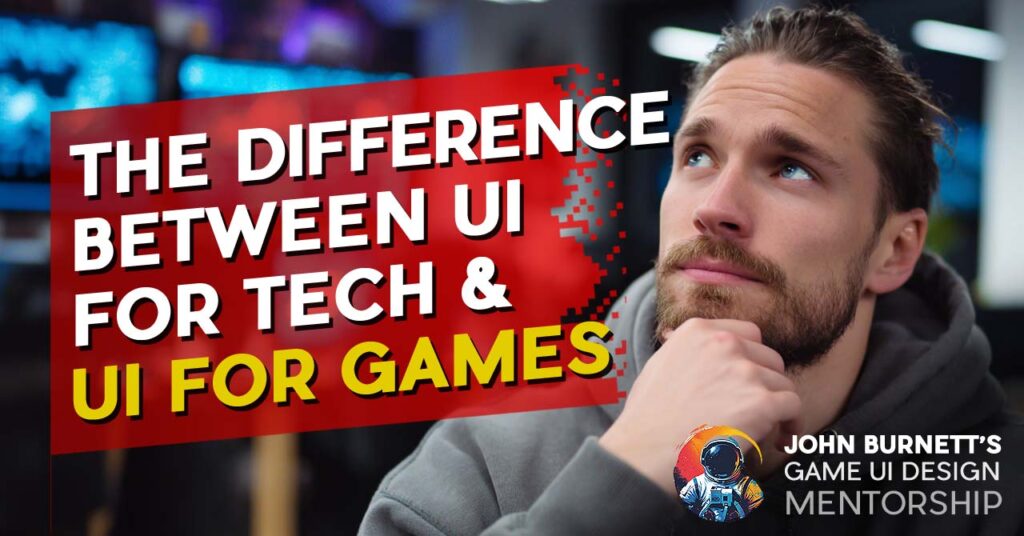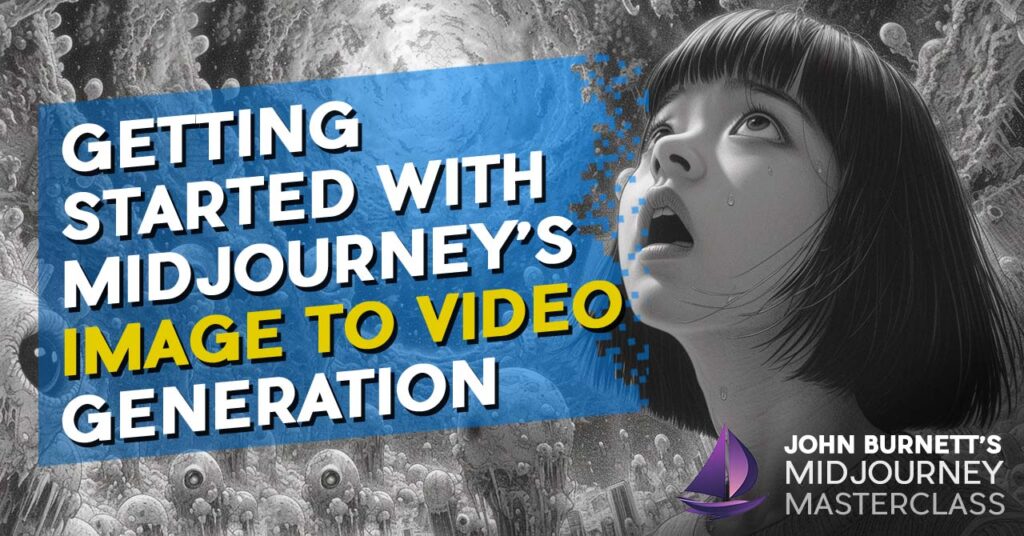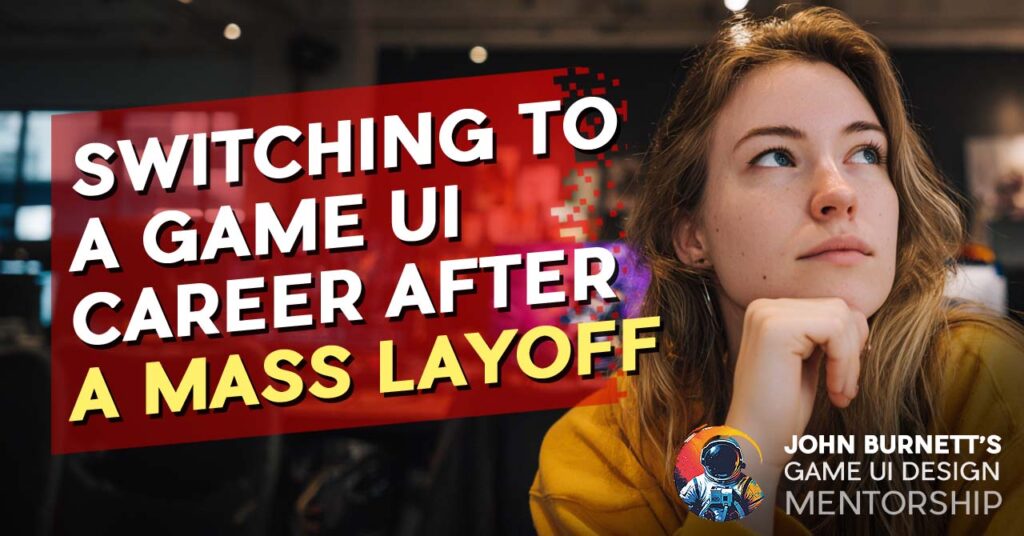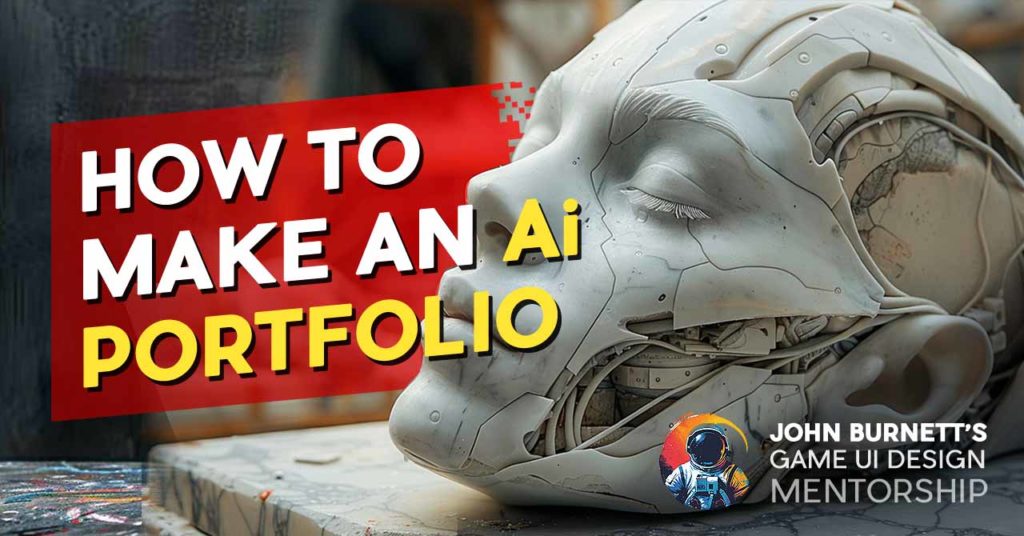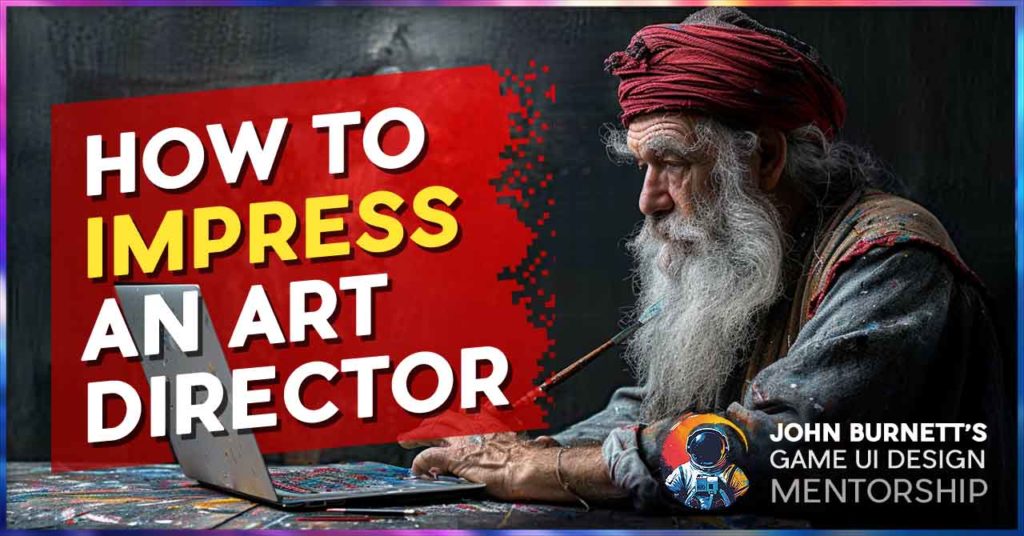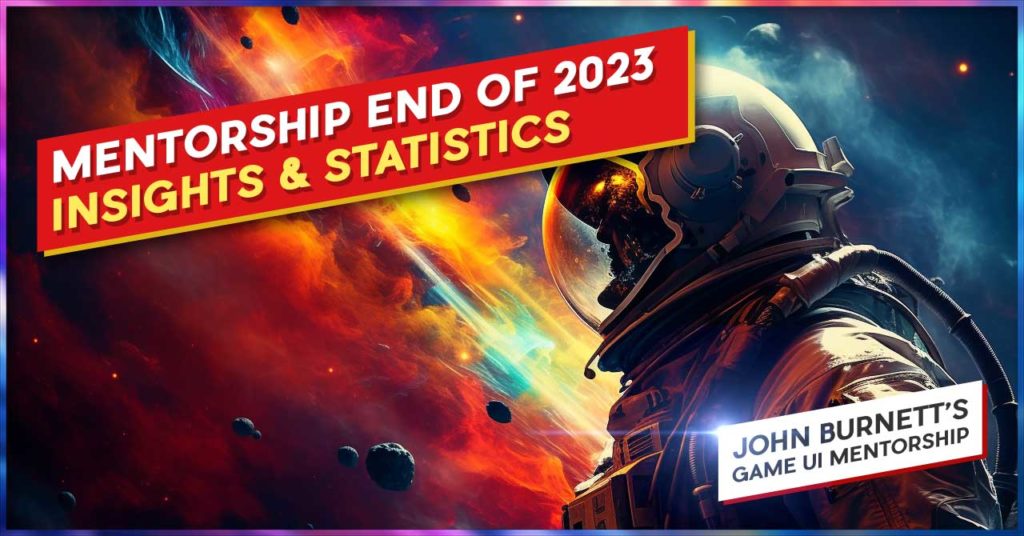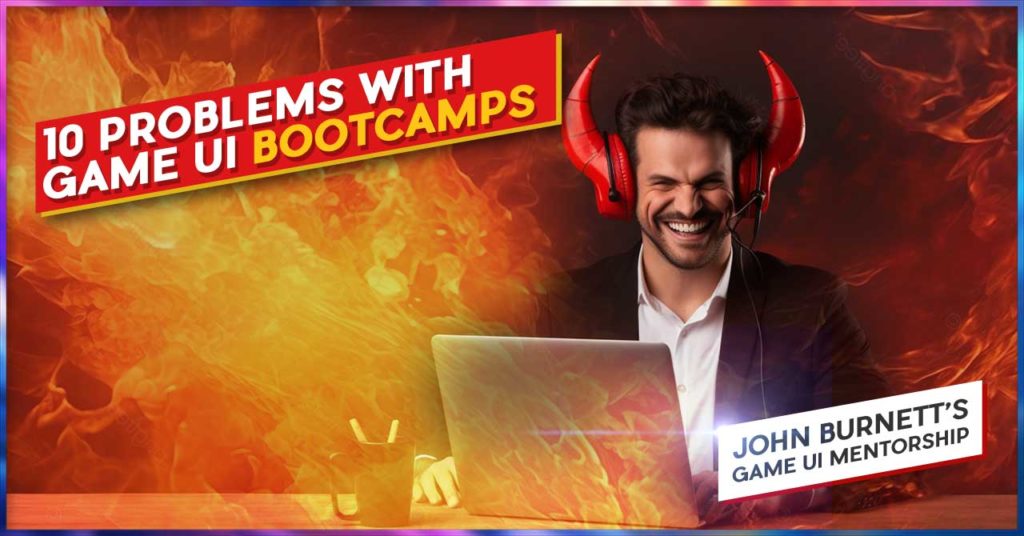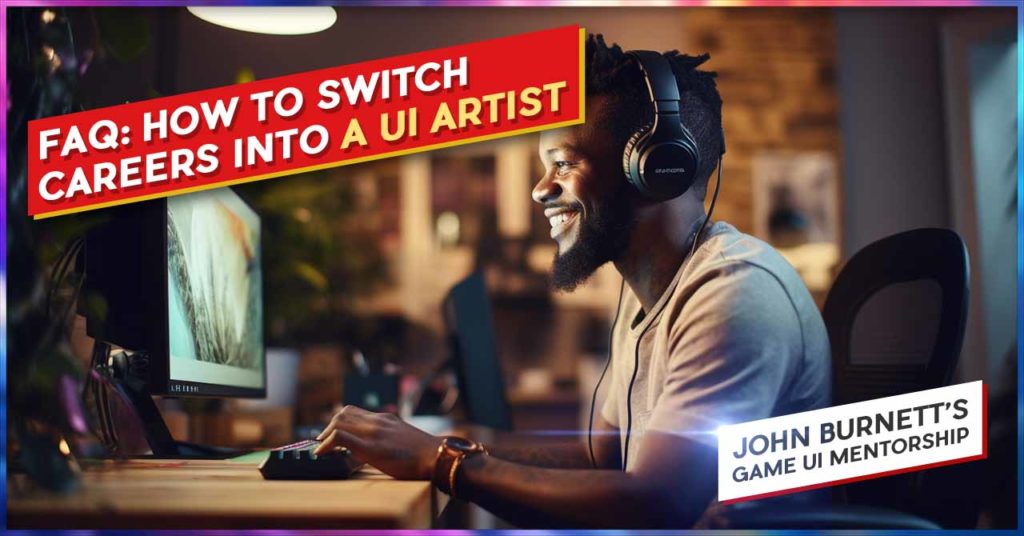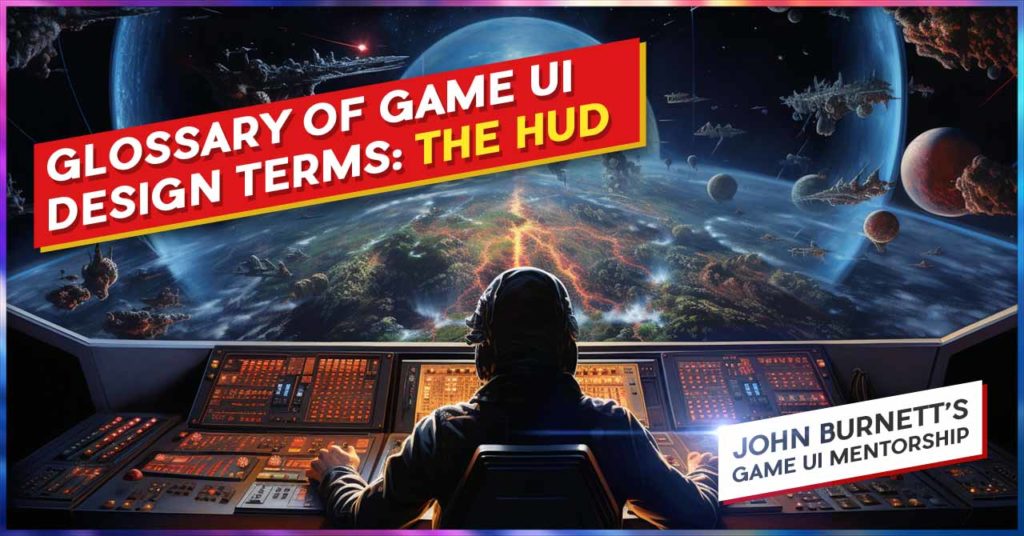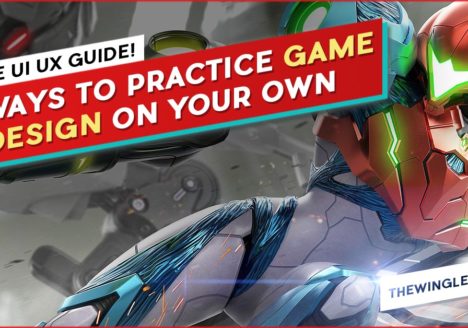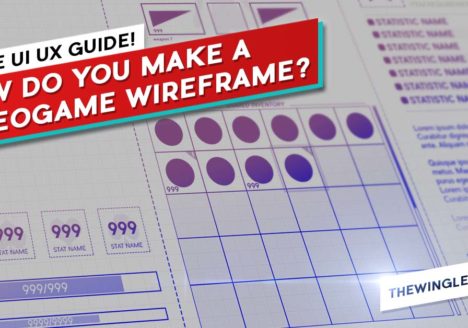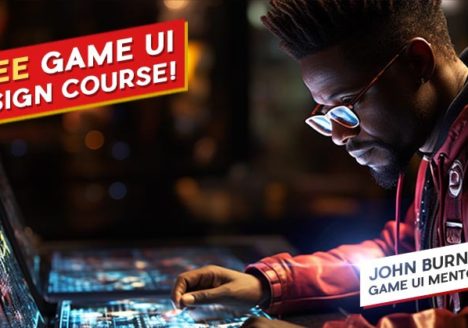Free Game UI Design Course: Common Mistakes to Avoid in a Junior Game UI Artist Portfolio
FREE GAME UI DESIGN COURSE FOR YOUR GAME UI PORTFOLIO
COMMON MISTAKES TO AVOID IN A JUNIOR GAME UI ARTIST PORTFOLIO
 By John “TheWingless” Burnett
By John “TheWingless” Burnett
Art Director, Senior UI Artist, Mentor. ex. Midway Games, EA, Id Software & Glu Mobile
Need 1-on-1 help with your Game UI Portfolio? Join my exclusive Game UI Design Course!
COMMON MISTAKES TO AVOID IN A JUNIOR GAME UI ARTIST PORTFOLIO
FREE GAME UI DESIGN COURSE FOR YOUR GAME UI PORTFOLIO
Aspiring game UI artists, especially those in the early stages of their careers, often find themselves facing the challenge of creating a portfolio that truly stands out – especially if you’re making the cardinal sin of trying to make a Game UI Portfolio without any guidance. Your portfolio is your digital calling card, showcasing not only your technical skills but also your creativity and understanding of user experience. Unlike every other job-getter out there, your Portfolio really comprises the vast majority of what makes or breaks you. To help junior game UI artists on their journey, I, John Burnett, your most humble Game UI/UX Mentor, will drop the insider info on a killer Junior UI Portfolio you at no charge, because I think you’re neat.
And to make a killer portfolio, we must avoid the things that kills a perfectly good Junior Game UI Portfolio! Such aAaaAaaaas–
My Portfolio, made in Flash between working for Electronic Arts and Id Software (you could do things like this back in the day…)
1. LACK OF DIVERSITY IN PROJECTS
One of the most prevalent mistakes junior game UI artists make is crafting a portfolio that lacks variety in projects. To truly stand out, it’s essential to showcase a diverse range of work that demonstrates your ability to tackle different styles, genres, and challenges within game UI design. A portfolio that solely focuses on a single type of game or design restricts your appeal to potential employers. The gaming industry thrives on innovation and adaptability, so exhibiting your versatility through a spectrum of projects will make you a more attractive candidate.
Moreover, a varied portfolio not only showcases your technical skills but also your creative flexibility. It provides potential employers with a more comprehensive understanding of your capabilities and indicates your readiness to take on diverse projects. By illustrating your proficiency in adapting your design approach to different contexts, you position yourself as a well-rounded junior game UI artist with the potential to contribute effectively to various gaming experiences. Here’s a great example from UI Artist Giovanni Chequi.
In summary, aspiring game UI artists should prioritize diversity in their portfolios to highlight their adaptability and versatility. This approach not only broadens your appeal but also positions you as a candidate capable of meeting every insane creative challenge and “reinvent this wheel again” innovation.
2. IGNORING THE USER EXPERIENCE
Game UI design extends beyond aesthetics; it’s about creating a seamless and enjoyable experience for players. A common pitfall for junior artists is prioritizing visuals over functionality in their portfolios. Here’s a super-duper insider secret: most Art Directors, who will likely be the decision-maker on if you get a job, will be UI blind. You have to hyper-specialize in UI to have a chance, and Art Directors, while supernaturally talented, cannot deep dive into any one of the arts (outside of their speciality, which is almost never UI). Meaning: Art Director’s won’t really know good from bad UX… but they will definitely know the pitfalls of a design in a genre they are working on! Focus on demonstrating how your designs enhance usability and contribute to an engaging player experience.
By incorporating user experience considerations into your portfolio, you position yourself as a designer who not only creates visually striking interfaces but also prioritizes the end-user’s interaction and satisfaction. This holistic approach showcases your commitment to delivering designs that go beyond mere aesthetics, ultimately making you a more valuable asset to potential employers who prioritize user-centered design. Think about the obvious design challenges behind just the most basic fantasy RPG inventory screen. How do you navigate different sections? How does compare/contrast work? Do we need a filter system? Those are all things an Art Director regardless of UI chops, will understand and judge harshly. Need a real working example of a functional game Inventory wireframe? Check out this post-mortem on Microsoft’s Wasteland III that I worked on.
Aspiring game UI artists should avoid the mistake of overlooking user experience in their portfolios. By showcasing a balance between aesthetics and functionality, you can convey a comprehensive understanding of game UI design principles, setting yourself apart in a competitive field.
The New Forge, a desktop app that helps you with awesome random fantasy names. Just for funsies.
3. OVERLOOKING PRACTICAL WORK
Mere visual representation of your work may not be sufficient in conveying the depth of your skills and creativity. It’s crucial to go beyond showcasing your designs and provide context through case studies for select projects in your portfolio. Now dear God, do not write a dissertation or a TED-talk, it’s the biggest turn-off to an Art Director. Think about it: nobody’s hiring a writer and if they were, they’d hire the writer than knows a picture is worth a thousand words! Take the opportunity to explain your design process, articulate the challenges you faced, and elaborate on the solutions you implemented. This not only demonstrates your problem-solving skills but also offers valuable insights into your creative thinking and decision-making process.
Including case studies, or more informally, conversationally walking strangers through your work, adds a layer of transparency to your portfolio, allowing potential employers to understand the thoughts and considerations behind each design. This narrative not only engages the viewer but also provides evidence of your ability to think critically and strategically in the face of design challenges. It’s an opportunity to tell a compelling story about your journey as a junior game UI artist and the unique approach you bring to each project. Curious to know what goes on inside the mind of an Art Director when they look at your work? Read my FREE Game UI Design Guide here!
Junior game UI artists should avoid the mistake of neglecting case studies in their portfolios, and should straddle the line between being informative and conversational. By sharing the stories behind their designs, they can create a more immersive and informative experience for potential employers, ultimately strengthening their position in a competitive job market.
4. INCONSISTENT PRESENTATION
Maintaining a consistent and professional presentation is paramount throughout your portfolio. Inconsistencies in style, formatting, or image quality can detract from the impact of your work and convey a lack of attention to detail. It’s crucial to pay careful attention to how you present each project, ensuring a cohesive and polished look that reflects your commitment to excellence. It’s not just about the look of your Portfolio, but the consistency of the individual art and design. If you have one whole project that’s nothing but icons, by God, you’d better showcase them in a way that highlights the quantity and quality. Conversely, if you only worked on a few icons, don’t make that a whole project, or even a footnote. By maintaining a uniform presentation style, you not only enhance the visual appeal of your portfolio but also communicate a sense of professionalism and meticulousness to potential employers.
Moreover, a consistent presentation style helps create a seamless viewing experience for those exploring your portfolio. It allows them to focus on the substance of your work without being distracted by discrepancies in presentation. This attention to detail can make a significant difference in how your portfolio is perceived, contributing to a positive impression of your skills and professionalism. Out of ideas on what to add to your Junior Game UI Portfolio? Check out this UI/UX Guide I wrote on 10 amazing ideas to add to your Game Portfolio.
Aspiring game UI artists should avoid the mistake of inconsistent presentation in their portfolios. By prioritizing a unified and polished appearance, you not only elevate the visual impact of your work but also convey a sense of reliability and attention to detail to those considering your portfolio.
5. NEGLECTING SOFT SKILLS
While technical skills are undeniably crucial, it’s equally important not to neglect the spotlight on your soft skills in your portfolio. No, not necessarily hobbies, and definitely not your Deviant Art page… but relevant skills and activities that orbit around the role you’re hunting for. Effective communication, collaboration, and the ability to receive and implement feedback are highly valued attributes in the gaming industry. Take the opportunity to discuss your role in team projects, elaborate on how you approached collaboration, and share insights into any challenges you overcame as part of a team.
Highlighting your soft skills provides a more holistic view of your capabilities as a junior game UI artist. It demonstrates your ability to work effectively within a team, adapt to diverse working environments, and contribute positively to the creative process. By showcasing not only your technical proficiency but also your interpersonal skills, you position yourself as a well-rounded professional capable of thriving in the collaborative and dynamic world of game UI design. So what exactly are some of those soft skills? Well… in no particular order:
- Creativity: Shops, Game Jams, Personal Work
- Adaptability: “Wearing Many Hats” roles, being conscripted into a role
- Communication: If you ran around like a headless chicken asking and providing, that’s a producer!
- Collaboration: Any team project, bonus points if its a small game team or Mentorship
- Attention to Detail: This is not a showcase of your ability to bore with minutae! Make it informative and concise!
- Time Management: Anything that cross the finish line technically had excellent time management (even if it was late!)
- Problem-Solving: Forward-facing roles, especially when hey interact with people tend to be nothing but problems
- User-Centric Thinking: This tends to be UI UX related, but for apps and web – aka, lesser forms of UI UX Design
- Openness to Learning: Engines, languages (coding), Unreal and Unity are all pluses.
- Teamwork: Again, anything people-facing
Junior game UI artists should avoid the mistake of neglecting soft skills in their portfolios. By emphasizing effective communication and collaboration, you can differentiate yourself and present a more comprehensive picture of your suitability for the collaborative nature of the gaming industry.
Nova Blitz, a digital trading card game made with Digital Foundry. a small project with lots to show.
6. QUANTITY OVER QUALITY
A common pitfall for junior game UI artists is including too many projects in their portfolios without maintaining a high standard of quality. The big name guys (hi, hello!) can get away with a much leaner Portfolio because they can lean on their network and clout. Junior? Not so much. It’s essential to be selective in showcasing your best and most relevant work. A smaller number of exceptional pieces will leave a more significant impact than a large collection of mediocre designs. Quality should always take precedence over quantity, as it reflects your commitment to excellence and allows potential employers to focus on the depth and proficiency of your skills.
By curating your portfolio with care, you demonstrate discernment and an understanding of the importance of delivering impactful work. Each project should serve as a testament to your skills and creativity, contributing to an overall narrative that reinforces your value as a junior game UI artist. This approach not only captures the viewer’s attention more effectively but also positions you as a candidate who prioritizes craftsmanship and thoughtful design. I always recommend 6-8 Portfolio pieces to be taken seriously in any interview… and certainly, the people out of 200+ applicants who are taken seriously have that many Pieces.
To sum up, aspiring game UI artists should steer clear of the mistake of prioritizing quantity over quality in their portfolios. A thoughtfully curated selection of high-quality projects will leave a lasting impression and better showcase your capabilities in a competitive industry.
7. FAILURE TO UPDATE
The importance of keeping your portfolio current cannot be overstated. Your portfolio should evolve alongside your growing skills and accumulating experiences. Unfortunately, one common mistake among junior game UI artists is creating a portfolio during their studies and then neglecting to update it as they gain more knowledge and complete new projects. Or, worse still, the desperate need for a Portfolio is now, now, now! Because it’s time to find a new job. It’s crucial to recognize that a static portfolio can inadvertently misrepresent your current abilities and might not align with the latest trends in game UI design.
Regularly refreshing your portfolio serves as a testament to your commitment to ongoing improvement and staying relevant in a dynamic industry. It allows potential employers to see not only your past achievements but also your continuous growth and adaptation to emerging design standards. By showcasing your most recent and refined work, you demonstrate a proactive approach to your professional development, reinforcing the idea that you are abreast of the latest advancements in game UI design. And if you’re morbidly curious why you’re making a Portfolio in the first place, here is a free Game UI/UX Design course on how a real Game UI Interview actually shakes out!
Junior game UI artists should be mindful of the mistake of failing to update their portfolios. Embrace the continuous evolution of your skills and the industry by regularly refreshing your portfolio, ensuring it accurately reflects your current abilities and positions you as a forward-thinking professional in the ever-changing landscape of game UI design.
CONCLUSION
Crafting a compelling junior game UI artist portfolio is a journey of self-discovery and growth… but it also kinda sucks. If you want the brutally honest truth, making a Portfolio by yourself is grueling, aimless work – and you should definitely build your Portfolio with a Game UI/UX Mentor. But if you can’t, hopefully these hard-‘n-fast rules will keep you safe as you build your Portfolio and skills. By avoiding these common mistakes, you can present yourself as a well-rounded and capable professional, increasing your chances of catching the eye of potential employers. Remember, your portfolio is not just a showcase of your work; it’s a dynamic reflection of your passion, dedication, and continuous improvement in the exciting world of game UI design.
